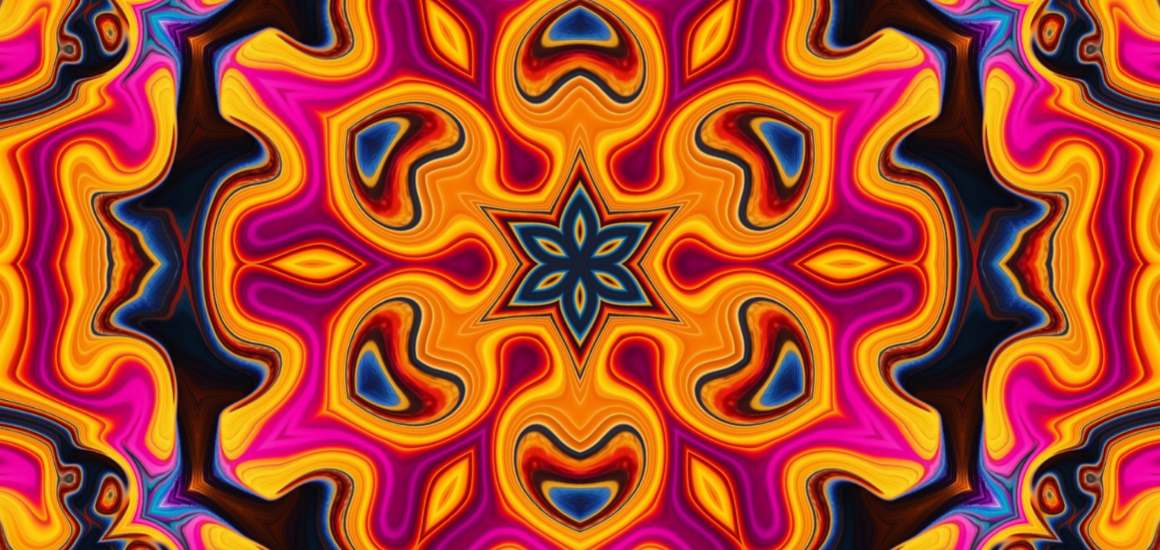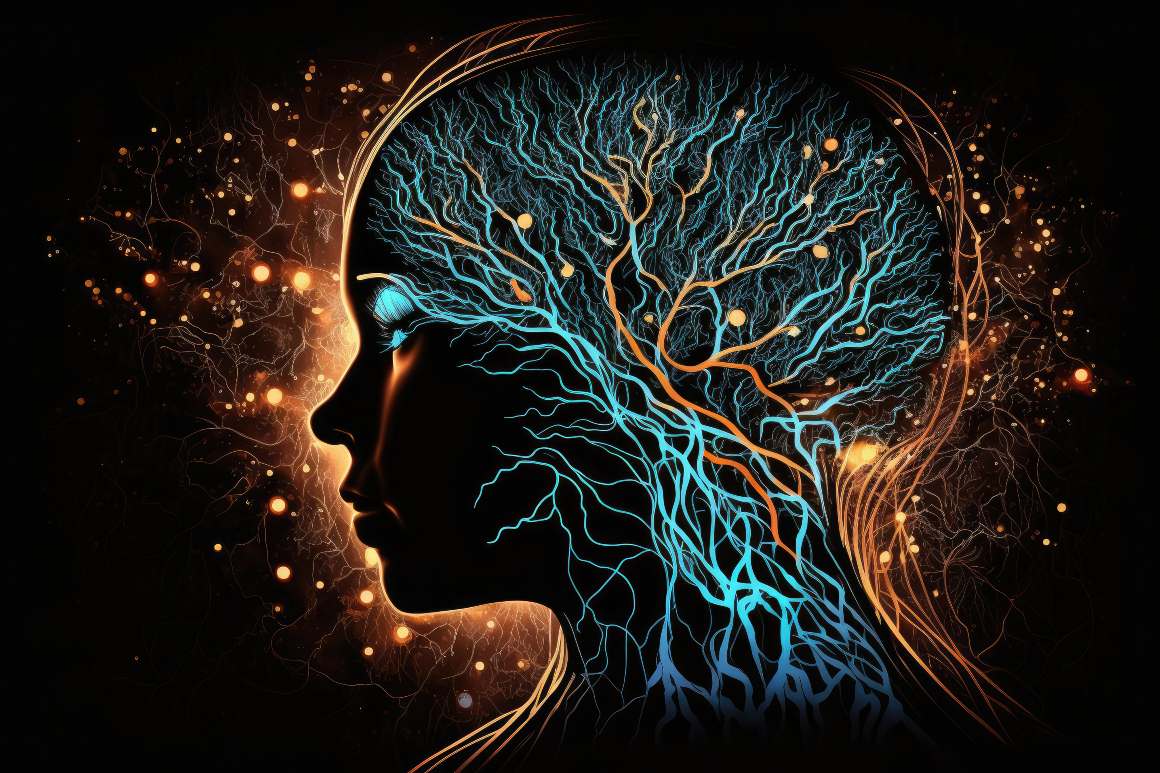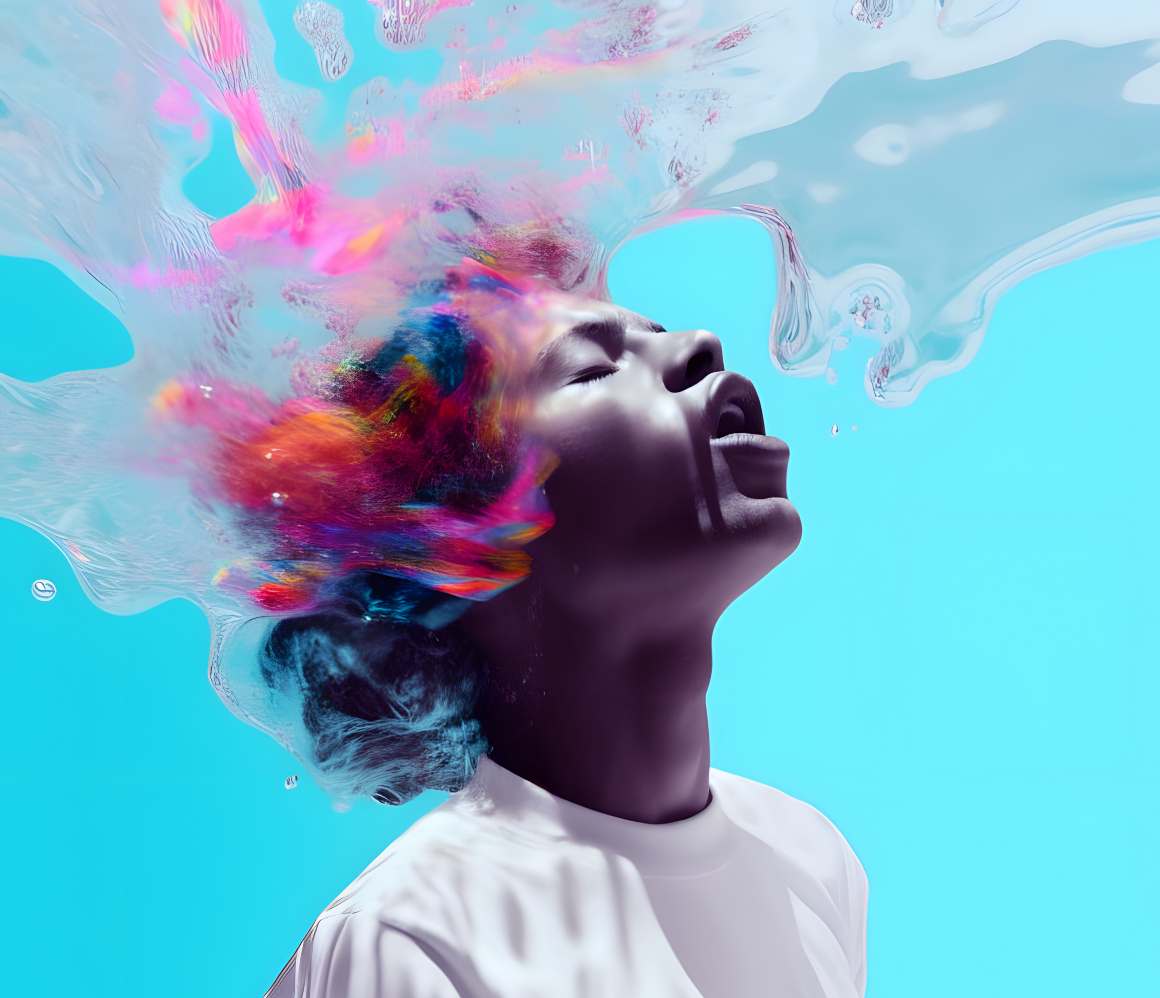Hypnopompic Hallucinations : Causes and Coping
Published:
To gain a comprehensive understanding of hypnopompic hallucinations, we will look at their definition, prevalence, common types and forms in addition to neurological similarities with sleep paralysis or out-of-body experiences. In this blog post, we will delve into the intricacies of hypnopompic hallucinations by exploring their definition, prevalence, common types and forms.
Contents:
- Causes Behind Hypnopompic Hallucinations
- Differentiating Between Nightmares and Hypnopompic Hallucinations
- The Incubus Phenomenon Connection
- Managing & Reducing Hypnopompic Hallucination Frequency
- When to Seek Medical Help for Hypnopompic Hallucinations
- FAQs in Relation to Hypnopompic Hallucinations
We will also examine the neurological similarities between these hallucinations and other phenomena such as sleep paralysis or out-of-body experiences. In addition, certain sleep issues may be correlated to a greater frequency of hypnopompic visions.
Furthermore, differentiating between nightmares and hypnopompic hallucinations can be challenging; thus, we will explore their distinguishing characteristics and stages of sleep in which each occurs. The connection with the Incubus Phenomenon will also be addressed.
Lastly, managing and reducing the frequency of these daytime hallucinations is crucial for those affected; therefore, we will provide guidance on maintaining a consistent sleep schedule, establishing relaxing bedtime routines, avoiding caffeine or alcohol before sleep, implementing stress management techniques along with indicators for seeking professional assistance when necessary. Potential treatment options available for those struggling with persistent hypnopompic hallucination episodes are covered as well.

Causes Behind Hypnopompic Hallucinations
Hypnopompic hallucinations, though common, still have researchers working to pinpoint an exact cause. These experiences share neurological similarities with both daytime hallucinations and dreams, which may provide some insight into their origin.
Neurological Similarities with Other Phenomena
Hypnopompic hallucinations appear to be related to other types of sensory perceptions that occur during sleep or wakefulness, such as those experienced by individuals with mental disorders like schizophrenia, and may be connected to the brain's natural process of transitioning between states of consciousness. For instance, visual and auditory hallucinations experienced by individuals suffering from mental disorders like schizophrenia bear a resemblance to those occurring in hypnopompic states. Additionally, these false perceptions seem connected with the brain's natural process of transitioning between different stages of consciousness.
Sleep Disorders Linked to Increased Occurrence
Certain slumbering ailments have been associated with a greater probability of having hypnagogic or hypnopompic illusions. Some examples include:
- Narcolepsy: A chronic neurological disorder characterized by excessive daytime sleepiness and sudden attacks of muscle weakness (cataplexy). People with narcolepsy often experience vivid dream-like images as they fall asleep (hypnagogia) or awaken (hypnopompy).
- Sleep Paralysis: A temporary inability to move or speak while falling asleep or waking up due to disrupted transitions between REM (rapid eye movement) and non-REM sleep stages. Accompanying these disrupted transitions between REM and non-REM sleep stages are often hallucinations similar to those experienced in hypnagogia or hypnopompy.
- REM Sleep Behavior Disorder: A sleep disorder where individuals physically act out their dreams during REM sleep, sometimes resulting in injuries or damage to the surrounding environment. This disorder has been connected to an amplified chance of experiencing both hypnagogic and hypnopompic hallucinations.
In addition to these specific disorders, other factors such as poor sleep quality, stress, anxiety, and certain medications (e.g., tricyclic antidepressants) can also contribute to the occurrence of these vivid experiences upon waking up. Furthermore, medical conditions like Parkinson's disease have been associated with a higher prevalence of hypnagogic and hypnopompic hallucinations.
It is important to note that while some people may be more susceptible due to underlying health issues or lifestyle factors, many healthy individuals will still occasionally experience these fleeting perceptions without any apparent cause for concern.

Differentiating Between Nightmares and Hypnopompic Hallucinations
Distinguishing between nightmares and hypnopompic hallucinations is essential to enable individuals to recognize their experiences better and seek appropriate support. This will help individuals recognize their experiences better and seek appropriate support if needed.
Characteristics Distinguishing the Two Phenomena
Nightmares are vivid, disturbing dreams that evoke fear or other negative emotions in the dreamer. They often involve a sense of threat or danger, causing significant distress upon waking up. On the other hand, hypnopompic hallucinations tend not to be frightening in nature; instead, they manifest as false perceptions involving any of the senses during awakening. These might include visual images such as changing patterns or animals appearing in one's room, auditory sensations like hearing voices or music when no external source is present, tactile feelings of being touched without anyone nearby or even olfactory (smell) experiences.
Stages of Sleep When Each Occurs
The timing within our sleep cycle also differentiates nightmares from hypnopompic hallucinations. Nightmares typically occur during REM (rapid eye movement) sleep, which is characterized by increased brain activity similar to wakefulness levels while we experience vivid dreaming episodes at this stage. In contrast, hypnopompic hallucinations take place during early non-REM stages of sleep when transitioning from sleeping to waking states.
- Nightmares: Happen primarily during REM sleep where most dreaming occurs.
- Hypnopompic Hallucinations: Occur during early non-REM stages of sleep, as the individual is waking up.
Understanding these distinctions can help individuals recognize their experiences better and seek appropriate support if needed. For instance, those who experience frequent nightmares might benefit from exploring potential triggers such as stress or anxiety, while people dealing with hypnopompic hallucinations could consider making lifestyle changes to improve their overall sleep quality.
The Role of Sleep Disorders in Nightmares and Hypnopompic Hallucinations
In some instances, sleep disturbances may be responsible for the appearance of both nightmares and hypnopompic visions. Conditions like insomnia or sleep apnea can disrupt normal sleep patterns, potentially increasing the likelihood of experiencing either phenomenon. Additionally, certain medical conditions such as Parkinson's disease or mental health disorders like schizophrenia can lead to a higher frequency of hypnagogic and hypnopompic hallucinations, necessitating proper evaluation and treatment from a healthcare professional. Therefore, it is essential for individuals struggling with persistent episodes to consult a healthcare professional for proper evaluation and treatment recommendations.

The Incubus Phenomenon Connection
One interesting aspect of hypnopompic hallucinations is their connection to the incubus phenomenon, a sleep-related experience characterized by feelings of pressure on the chest while sleeping, as if someone or something were sitting on the individual's chest. This sensation can be accompanied by other symptoms such as difficulty breathing, fear, and even visual or auditory hallucinations.
Incidence and Link with Mental Health Disorders
Research indicates that up to 30% of people may experience the incubus phenomenon at least once in their lives. Studies have suggested that individuals with certain mental health disorders, such as schizophrenia, are more likely to experience the incubus phenomenon than those without. A study published in Sleep Medicine Reviews found that people diagnosed with schizophrenia had an increased likelihood of experiencing both hypnagogic and hypnopompic hallucinations compared to healthy controls (source). It is essential for healthcare providers to consider this link when evaluating patients reporting frequent episodes of incubus phenomena.
Hypnopompic Hallucinations vs Sleep Paralysis: The Overlap
In some cases, the overlap between hypnopompic hallucinations and sleep paralysis may be evident. Sleep paralysis occurs when a person wakes up during REM sleep but remains unable to move or speak due to temporary muscle immobility. During these episodes, individuals often report feeling intense fear along with vivid visual or auditory hallucinations similar to those experienced during hypnopompic hallucinations.
It is vital to differentiate between sleep paralysis and hypnopompic hallucinations, despite both being potentially alarming. Sleep paralysis typically occurs during REM sleep when muscle atonia (temporary muscle immobility) prevents individuals from acting out their dreams. In contrast, hypnopompic hallucinations occur as a person transitions from non-REM to wakefulness and are not necessarily accompanied by an inability to move or speak.
Understanding the Neurological Basis
The exact neurological basis for the incubus phenomenon and its connection with hypnopompic hallucinations remains unclear. Some researchers suggest that these experiences may result from a temporary disruption in brain function as one transitions between different stages of sleep (source). For instance, certain areas of the brain responsible for processing sensory information might become active before other regions responsible for motor control or emotional regulation have fully awakened.
This theory aligns with findings that show similarities in brain activity patterns during episodes of sleep-related hallucinations, daytime hallucinations associated with mental disorders like schizophrenia, and normal dreaming processes.

Managing & Reducing Hypnopompic Hallucination Frequency
If you experience hypnopompic hallucinations, making certain lifestyle changes can help reduce their frequency and impact on your daily life. By maintaining a consistent sleep schedule, creating a relaxing bedtime routine, avoiding caffeine and alcohol before bed, and managing stress effectively, you may be able to decrease the occurrence of these episodes if they are causing distress or anxiety over time.
Sleep Schedule Consistency
One key factor in reducing the frequency of hypnopompic hallucinations is establishing a regular sleep pattern. Going to bed at the same time every night and waking up at the same time each morning helps regulate your body's internal clock. This consistency can improve overall sleep quality and potentially minimize instances of nighttime disturbances such as visual or auditory hallucinations.
Relaxing Bedtime Routines
A calming pre-sleep ritual can also contribute to better sleep hygiene. Engaging in activities that promote relaxation before bedtime - such as reading a book, taking a warm bath, practicing deep breathing exercises or meditating - can signal your brain that it's time for restorative slumber. Avoid stimulating activities like watching TV or using electronic devices close to bedtime since exposure to blue light from screens has been linked with poor sleep quality.
Avoidance of Caffeine and Alcohol Before Sleep
Certain substances like caffeine found in coffee, tea or chocolate act as stimulants which interfere with normal sleeping patterns leading to excessive daytime sleepiness when consumed too close to bedtime; hence increasing chances for experiencing hypnagogic hallucinations during periods where one is falling asleep while still awake. Likewise, alcohol can initially induce drowsiness but its metabolism in the body later on may interfere with sleep. To promote better sleep, limit caffeine intake to earlier in the day and avoid consuming alcohol within a few hours of bedtime.
Stress Management Techniques
Maintaining healthy levels of stress is essential to reducing the occurrence of hypnopompic hallucinations, as well as preserving overall mental health. Incorporating relaxation techniques such as deep breathing exercises, progressive muscle relaxation or mindfulness meditation into your daily routine can help alleviate stress levels that could be contributing to these nighttime disturbances. Engaging in consistent physical activity has been demonstrated to improve sleep quality, one's emotional state and reduce anxiousness associated with inadequate rest.
If you continue experiencing frequent hypnopompic hallucinations despite implementing these lifestyle changes, consult with a healthcare professional who can provide further guidance on potential treatment options or adjustments to current medications that might be exacerbating the issue.

When to Seek Medical Help for Hypnopompic Hallucinations
If hypnopompic hallucinations cause distress or anxiety, it is important to consult with a healthcare provider who may prescribe medications or adjust current medications that could be contributing to the occurrence of these experiences. Early intervention can help address any underlying medical conditions causing such episodes.
Indicators for Seeking Professional Assistance
Hypnopompic visions are usually innocuous and do not necessitate medical care. However, there are certain situations where seeking professional assistance might be necessary:
- Persistent occurrences: If you experience hypnopompic hallucinations frequently and they disrupt your sleep or daily life, it's time to consult a healthcare professional.
- Inability to differentiate between reality and hallucination: If you find yourself struggling to distinguish between what is real and what was part of the hallucination, this could indicate an underlying issue that needs addressing.
- Anxiety or fear associated with the experience: While most hypnopompic hallucinations are not frightening in nature, if they cause significant anxiety or fear, seek help from a mental health professional.
- Sleep disorders: Experiencing other sleep-related issues like insomnia, excessive daytime sleepiness (EDS), or sleep paralysis alongside your hypnopompic hallucinations might warrant further investigation by a specialist in sleep medicine.
Potential Treatment Options
Treatment options for hypnopompic hallucinations will depend on their root causes. Your healthcare provider may recommend one or more of the following approaches:
- Medication adjustments: If you are currently taking medications such as tricyclic antidepressants or have a medical condition like Parkinson's disease, your healthcare provider may adjust the dosage or prescribe alternative treatments to help alleviate hallucinations.
- Cognitive-behavioral therapy (CBT): CBT is an effective treatment for various mental health disorders and can be helpful in addressing anxiety related to hypnopompic hallucinations. A trained therapist will work with you to develop coping strategies and techniques for managing these experiences.
- Sleep hygiene improvements: As mentioned earlier, maintaining a consistent sleep schedule, creating a relaxing bedtime routine, avoiding caffeine/alcohol before bed along with managing stress can help decrease the frequency of occurrences if you're struggling from frequent episodes causing distress/anxiety over time. Your healthcare provider may recommend specific changes tailored to your individual needs.
In some cases, hypnopompic hallucinations could be associated with more serious underlying conditions such as narcolepsy or schizophrenia; therefore, specialized medical treatment is essential for individuals experiencing these symptoms. It is vital that those affected get the right aid and support from trained experts who have expertise in managing these intricate medical issues.
If you suspect that your hypnopompic hallucinations could be linked to an underlying issue or they are causing significant distress in your life, don't hesitate to reach out for professional assistance. Prompt action is essential for managing the source of distress and enhancing one's well-being.
FAQs in Relation to Hypnopompic Hallucinations
Is it Normal to Have Hypnopompic Hallucinations?
Yes, hypnopompic hallucinations are relatively common and can occur in healthy individuals. They typically happen during the transition from sleep to wakefulness and may involve visual, auditory, or tactile sensations. While they can be unsettling, occasional occurrences are not usually a cause for concern.
What Are Hypnopompic Hallucinations a Symptom Of?
Hypnopompic hallucinations can be a symptom of various conditions such as narcolepsy, sleep paralysis, or post-traumatic stress disorder (PTSD). However, they may also occur without any underlying condition in response to factors like stress or disrupted sleep patterns.
What Are Three Hypnagogic Hallucination Examples?
Three examples of hypnagogic (occurring while falling asleep) hallucinations include:
- Seeing geometric shapes or patterns
- Hearing voices or music that isn't actually playing
- Feeling physical sensations like floating or being touched when no external stimulus is present
What Helps Hypnopompic Hallucinations?
To reduce the frequency of hypnopompic hallucination episodes:
- Maintain consistent sleep schedules
- Create relaxing bedtime routines
- Avoid caffeine and alcohol before sleeping
- Practice stress management techniques such as meditation and exercise
If these strategies don't help after some time has passed, consider seeking professional assistance.








